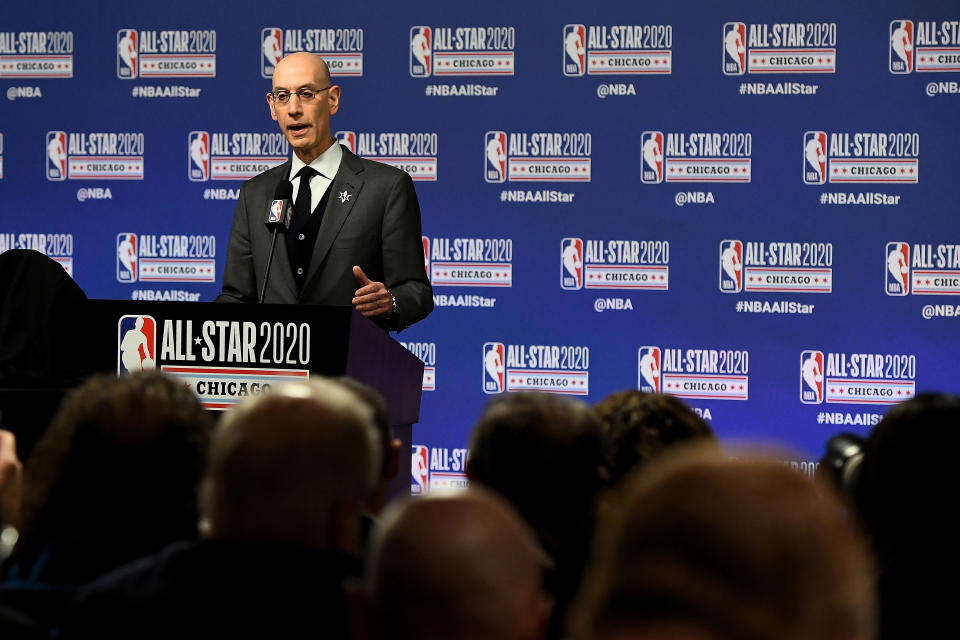Where MLS went wrong with its coronavirus protocols, and what the NBA can learn

Three days before MLS attempts to resume play at the epicenter of the coronavirus pandemic, it is facing more than a dozen positive tests, one game postponement, likely more to come, and a boatload of uncertainty.
It is facing all of this in part because of two simple, understandable but avoidable flaws in its plan.
Multiple MLS teams have now brought COVID-19 into the league’s Florida bubble. They’ve trained and socialized while the virus has gone undetected. Then, after the detection of intra-team spread, they’ve halted training and quarantined, for several consecutive days, within a week of their opening games.
It’s a mess, and it’s accelerating toward kickoff, for three big reasons:
The U.S. failed to subdue the coronavirus. (This, obviously, is not MLS’ fault.)
MLS only required players to quarantine for roughly 24 hours upon arrival. This leaves a window of 3-6 days where players could A) contract the virus outside the bubble, B) test negative upon arrival, and C) spread it to teammates, coaches or others inside the bubble once they become infectious – which is typically 4-7 days after infection.
MLS only required teams to enter the bubble a week before their openers, leaving no time for ample quarantine, and no time for virus-ravaged teams to recover and stabilize before kickoff.
The entire situation should serve as a warning. To every major U.S. sports league, but specifically to the NBA, which later this month will resume in its own Disney World bubble.
Its plan already addresses Reason No. 3. But its quarantine-upon-arrival protocols, while stricter than Major League Soccer’s, leave it vulnerable to an MLS-style mess.
The problem
NBA teams will enter the league’s bubble July 7-9, three weeks before play resumes. That will ease most concern that outside-the-bubble infection could impact the actual season. MLS, with its seven-day buffer, self-inflicted time pressure and uncertainty. The NBA should avoid it.
But the several-day lag time between COVID-19 infection and detection is still problematic. The NBA’s plan – to quarantine all individuals in hotel rooms for their first 36-48 hours inside the bubble – doesn’t address that problem, epidemiologists confirm. Which is why the NBA should look at MLS, rethink its own protocols, and strengthen them.
The troubling hypothetical is this: Let’s say Team X is scheduled to depart for Disney on July 8. Let’s say the team’s star, Player A, contracts the virus from a family member on July 6. Player A would almost certainly test negative upon arrival, then again the following day. He’d be free to leave his hotel room. But on July 10, 11 or 12, he’d likely become infectious, and have opportunities to spread the virus to teammates.
The solution
The nearly-foolproof solution is to triple the length of that initial quarantine. Of course, no player or staffer wants to shelter in a hotel room for six days. But doing so would allow the league to catch every coronavirus case brought to the bubble from home markets. It would squelch intra-team spread. If practice began on Day 6 or 7, rather than Day 3, teams could be fairly certain that all participating players were virus-free.
It’s short-term personal sacrifice for long-term communal gain. A six-day quarantine is undesirable. But the potential outcomes it prevents are far more undesirable. The risk of the current protocols is that Player A infects three teammates on July 11 before testing positive on July 12. Team X would then have two options:
Shut down practice and all other group activities for seven days, quarantine all players to ensure no further spread
Continue to practice, but risk further spread
Option 1 means a week without practice as the restart approaches, and a competitive disadvantage. Option 2 leaves Team X susceptible to the nightmare scenario: Those three teammates, the ones who’ve been infected by Player A, infect four more teammates on July 16 or 17 before testing positive themselves. Team X would have roughly half its players unavailable or barely available when the season resumes. It would also have the same dilemma outlined above all over again.
Basically, risk begets more potential risk. More potential messiness. The NBA can avoid it if employees are willing to endure several days of confinement. Several days of confinement for everybody would mean a competitive disadvantage for nobody, and a smooth restart.
MLS is living proof of the opposite, and a lesson with a clear conclusion: that short-term, front-end sacrifice is worthwhile. Perhaps even necessary.
More from Yahoo Sports:


